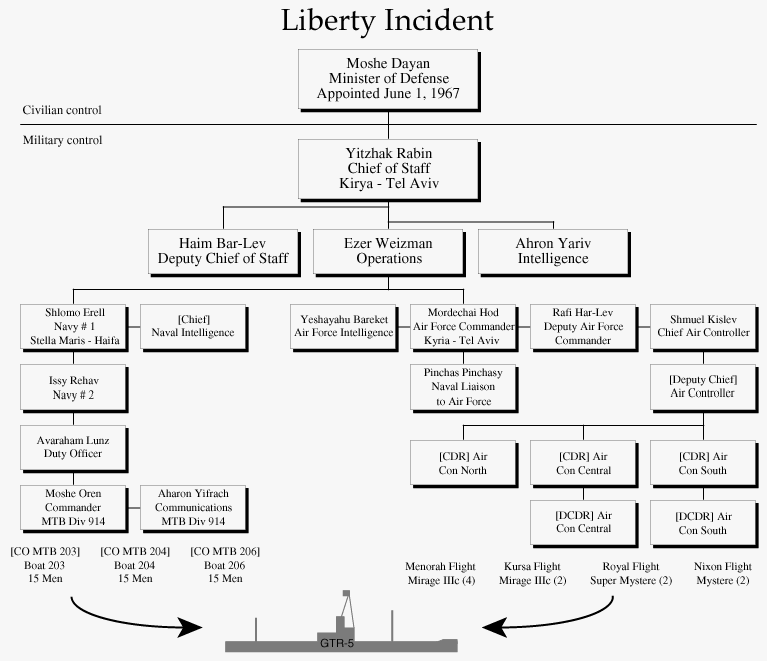| About... | Documents | The Book | Interviews | Author | ||||||
Israel Defense Force Chain of Command
Like the United States, Israel has civilian control of the military. In June 1967, the Israel Minister of Defense (the equivilent of the U.S. Secretary of Defense) was Moshe Dayan. The Minister of Defense, the Chief of Staff and the high command were not in the tactical loop that was involved in the attacks on the USS Liberty and only learned of the incident during or after the air attack.
Army Forces at El Arish first reported being shelled from the sea. These reports were considered a naval matter and directed to Navy tactical command headquarters at Stella Maris in Haifa. Thereafter, the Navy interfaced with the Air Force tactical command headquarters at the Kirya (the Israeli equivalent to the US Pentagon) in Tel Aviv. The two command centers were over 60 miles apart and connected by closed telephone lines. Tactically, the inability of the Air Force and Navy to rapidly and effectively communicate may have resulted in the failure to prevent the second phase of the incident, the attack by the motor torpedo boats (MTBs).
At the time this research project began, Moshe Dayan was deceased. All other Israelis in the chain of command shown in boxes in the chart (below), the three surviving pilots (Kursa Flight Leader, Kursa Wing, and Royal Flight leader), the three MTB commanders, and the MTB 914 Division Commander were interviewed. Many of the individuals were interviewed more than once.
 |